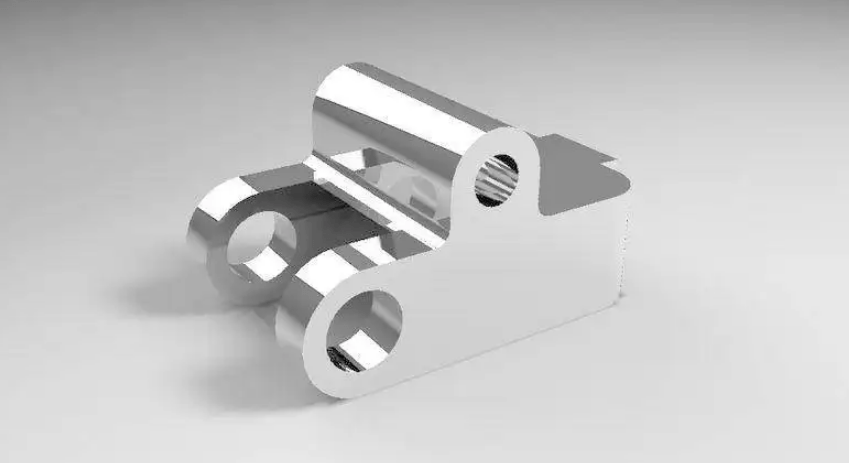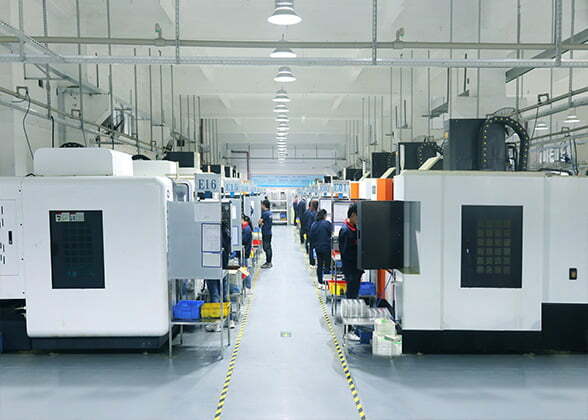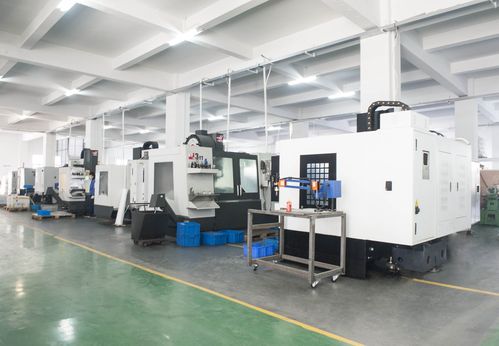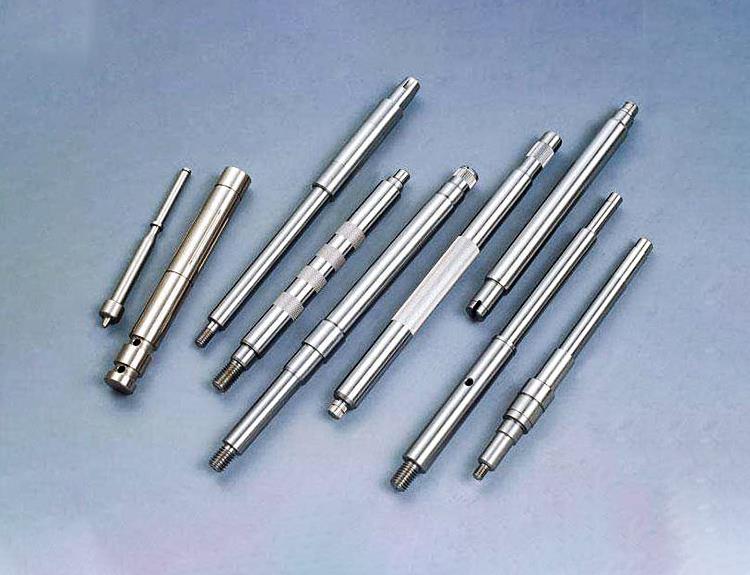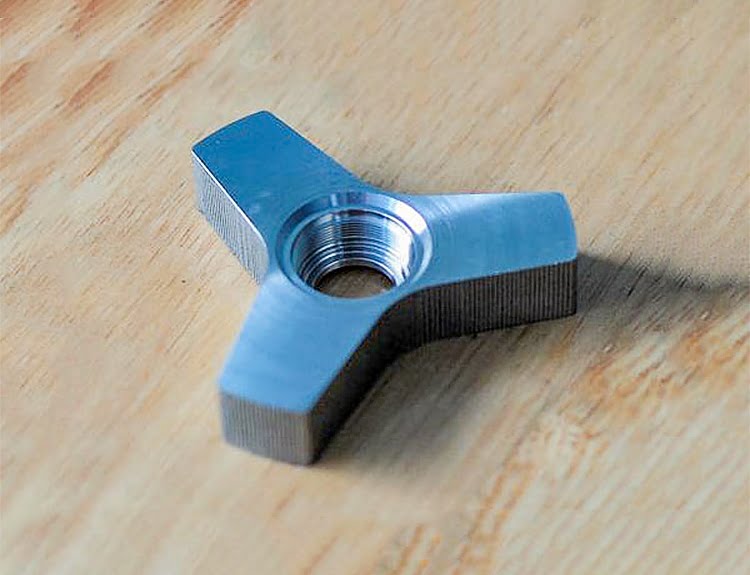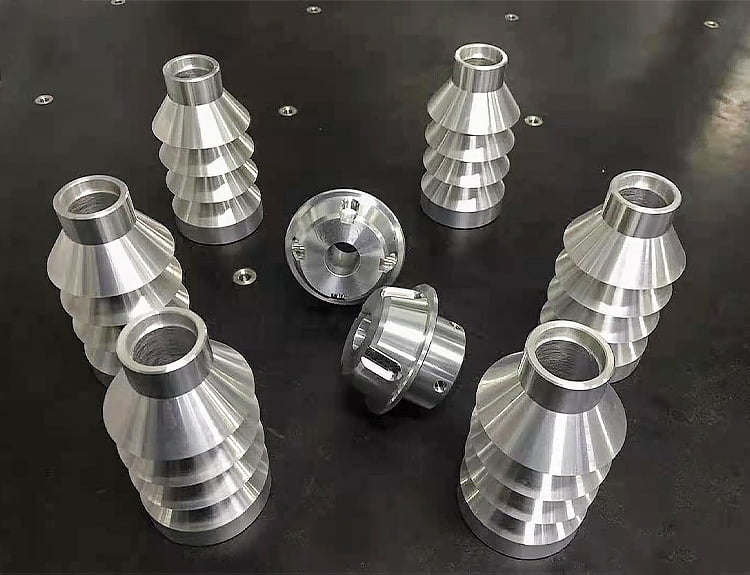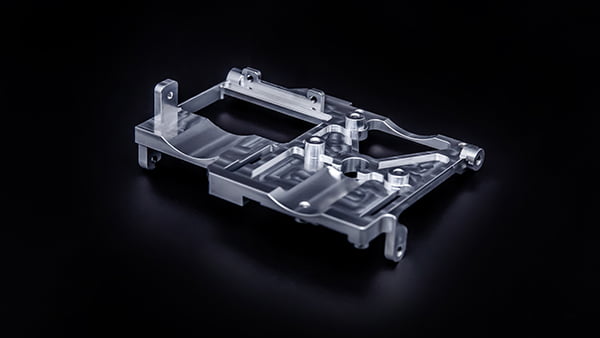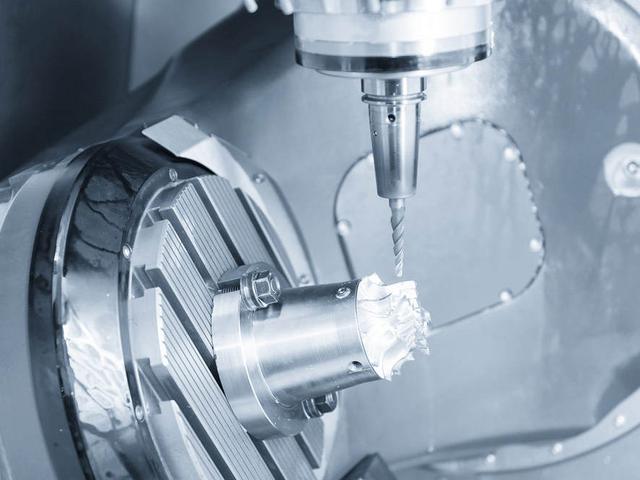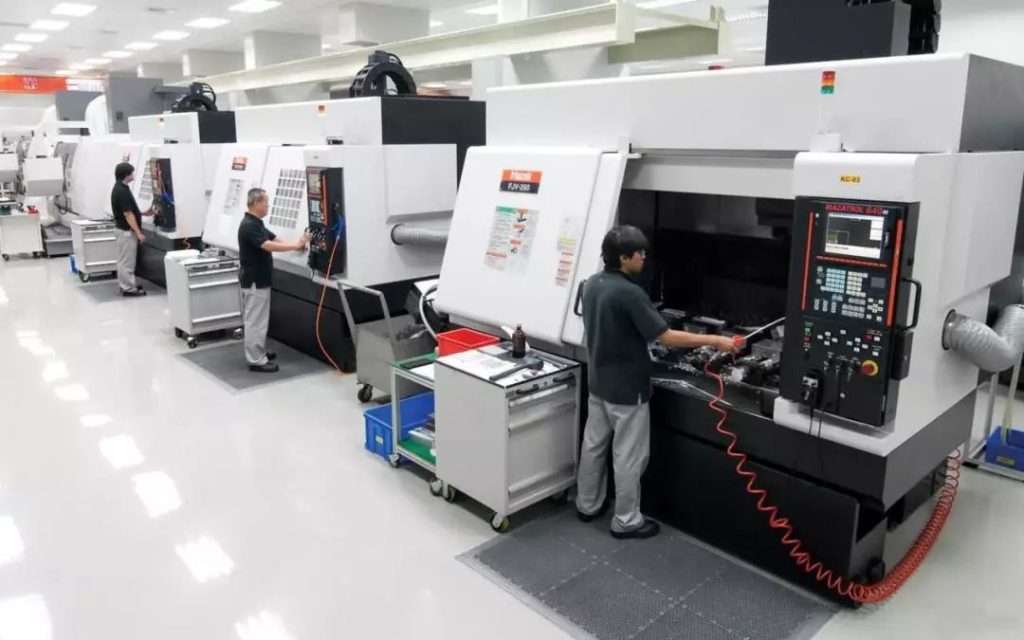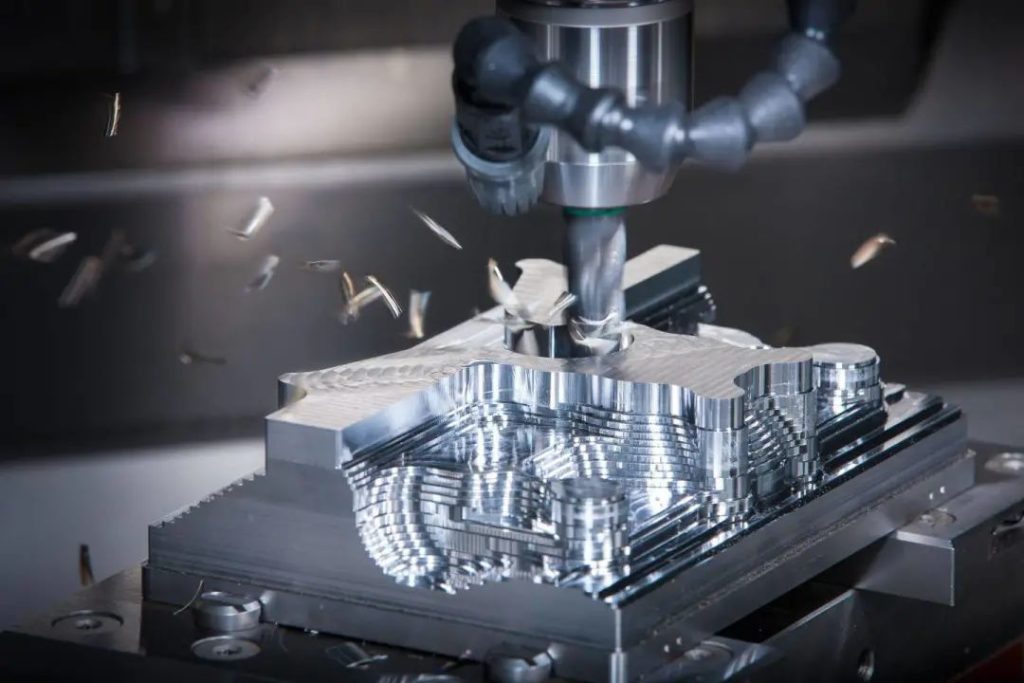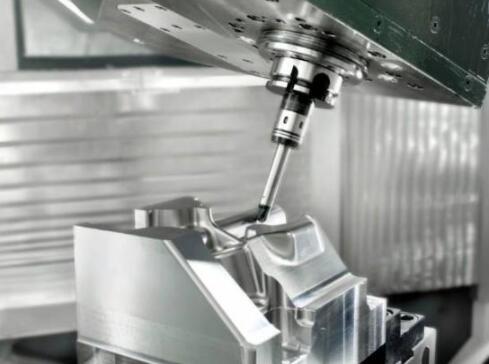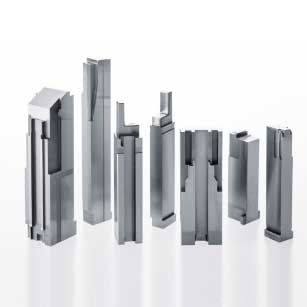Mechanical parts processing industry sector, often plastic as raw materials for further processing, now on the market a very large variety of plastic, then in the processing of mechanical parts should choose what kind of plastic? Let me tell you today!
1.ABS plastic
ABS parts manufacturing process
CNC machining / hand board production / injection moulding / blister moulding / 3D printing
ABS material characteristics and applications
ABS resin is one of the five synthetic resins, its impact resistance, heat resistance, low temperature resistance, chemical resistance and electrical properties, but also has easy processing, product size stability, good surface gloss and other characteristics, easy to paint, coloring, but also surface spraying metal, electroplating, welding, hot pressing and bonding and other secondary processing, widely used in machinery, automotive, electronics and electrical appliances, instrumentation, textiles and ABS is usually a light yellow or milky white granular non-crystalline resin and is one of the most widely used engineering plastics.
- Nylon PA6
Nylon manufacturing process
CNC machining / Handcrafting / Injection moulding / 3D printing
Properties and applications of nylon PA6
This material has the best combination of properties, including mechanical strength, stiffness, toughness, mechanical damping and wear resistance. These properties, combined with good electrical insulation and chemical resistance, make Nylon 6 a "general purpose" material for the manufacture of mechanical and serviceable parts.
- Nylon PA66
Nylon PA66 manufacturing process
CNC machining / prototyping / injection moulding / 3D printing
Properties and applications of nylon PA66
Compared with nylon 6, its mechanical strength, stiffness, heat and wear resistance, creep resistance is better, but the impact strength and mechanical damping performance is reduced, ideal for automatic lathe machining. PA66 is more widely used in the automotive industry, instrument housing and other products requiring impact resistance and high strength requirements.
- Nylon PA12
Nylon PA12 manufacturing process
CNC machining / Handcrafting / Injection moulding / 3D printing
Properties and applications of nylon PA12
PA12 is the scientific name for poly(dodecalactam), also known as nylon 12, the basic raw material for polymerisation is butadiene, which can depend on petrochemicals. It is a semi-crystalline - crystalline thermoplastic material. PA12 is a good electrical insulator and, like other polyamides, does not suffer from moisture-related insulating properties. PA12 is available in a number of improved variants in terms of plasticisation and reinforcement properties. Compared to PA6 and PA66, these materials have a lower melting point and density and a very high moisture recovery rate. Typical applications for Nylon 12 are: water meters and other commercial equipment, cable sleeves, mechanical cams, sliding mechanisms, photovoltaic backsheets and bearings, etc.
- PVC
PVC manufacturing process
CNC machining / handcrafting / injection moulding
PVC characteristics and applications
Polyvinyl chloride (PVC) is a polymer formed by the polymerisation of vinyl chloride monomer (VCM) in the presence of initiators such as peroxides and azo compounds, or in the presence of light or heat in accordance with the mechanism of free radical polymerisation. Vinyl chloride homopolymers and vinyl chloride copolymers are collectively known as vinyl chloride resins, and PVC was once the world's most widely produced general purpose plastic. It is widely used in construction materials, industrial products, daily necessities, floor leather, floor tiles, artificial leather, pipes, wires and cables, packaging films, bottles, foaming materials, sealing materials, fibers, etc.
6.POM race steel
POM manufacturing process
CNC processing / hand-made / injection moulding
POM characteristics and applications
POM is a tough and elastic material, even at low temperatures still has good creep resistance, geometric stability and impact resistance. Homopolymer materials have good ductile strength and fatigue strength, but are not easy to process. Copolymer materials have good thermal stability, chemical stability and are easy to process. Both homopolymer and copolymer materials are crystalline and do not readily absorb moisture, and the high degree of crystallinity of POM results in considerable shrinkage, which can be as high as 2% to 3.5%. POM has a very low coefficient of friction and good geometrical stability, making it particularly suitable for gears and bearings. As it is also resistant to high temperatures, it is also used for piping devices (valves, pump housings), lawn equipment, etc. Audio machines such as VCRs, CD, LD, MD players, radios, headphones, stereos, etc., OA machines such as printers, keyboards, CD-ROM drives, household appliances such as washing machines, dryers, hairdryers, parts for automobiles such as mechanical parts for seat belts, external door handles, mirrors, engine chambers, etc., as well as precision parts for cameras, clocks and watches, etc., and construction materials, toys such as game consoles and stationery. The materials used for the molding of toys and stationery, etc.
- Bakelite
Bakelite manufacturing process
CNC machining / hand-made boards
Bakelite properties and applications
Bakelite is the first variety of plastic to be put into industrial production. It has high mechanical strength, good insulation, heat resistance, corrosion resistance, so it is often used in the manufacture of electrical materials, such as switches, lamp heads, headphones, telephone cases, instrument cases, etc., "Bakelite" thus named.
- Plexiglass PMMA acrylic
Acrylic manufacturing process
CNC processing / hand board production / injection moulding / blister moulding
Acrylic properties and applications
Plexiglass (Polymethyl methacrylate) is a common name, abbreviated as PMMA, the chemical name of this polymer transparent material called polymethyl methacrylate, is a polymer compound made of methyl methacrylate polymerization. It is an important thermoplastic that was developed earlier. Plexiglass is divided into four kinds of colourless transparent, coloured transparent, pearlescent and embossed plexiglass. Plexiglass is commonly known as acrylic, C.X. acrylic, sub-gloss, plexiglass has better transparency, chemical stability, mechanical properties and weather resistance, easy to dye, easy processing, beautiful appearance and other advantages. Plexiglass is also called gelatin glass, acrylic and so on. The material is widely used in the production of advertising light boxes, nameplates and other aspects.
9.PC
PC manufacturing process
CNC processing / handcrafting / injection moulding / blister moulding
PC characteristics and applications
Polycarbonate (PC for short) is a polymer containing carbonate groups in the molecular chain, which can be divided into aliphatic, aromatic, aliphatic-aromatic and other types according to the structure of the ester group. The three major applications of PC engineering plastics are glass assembly, automotive industry and electronics and electrical industry, followed by industrial machinery parts, optical disks, packaging, computer and other office equipment, medical and health care, film, leisure and protective equipment, etc.
- PP
PP manufacturing process
CNC processing / hand-made panels / injection moulding
PP characteristics and applications
Polypropylene is a thermoplastic resin made from the polymerisation of propylene. With a small relative density of 0.89-0.91, it is one of the lightest varieties of plastic. Due to its high crystallinity, this material has excellent surface stiffness and scratch resistance. PP does not suffer from environmental stress cracking.
- PPS
PPS manufacturing process
CNC machining / handcrafting
PPS properties and applications
PPS plastic (polyphenylene sulfide) is a comprehensive performance of thermoplastic special engineering plastics, its outstanding features are high temperature resistance, corrosion resistance and superior mechanical properties. Electrical insulation (especially high-frequency insulation) excellent, white hard and brittle, falling on the ground with a metallic sound, light transmission second only to organic glass, coloring water resistance, good chemical stability. It has excellent flame retardancy and is a non-combustible plastic. General strength, very good rigidity, but brittle, easy to produce stress brittle crack; not resistant to organic solvents such as benzene, gasoline; long-term use temperature up to 260 degrees, in 400 degrees in the air or nitrogen to maintain stability. By adding glass fibers or other reinforcing materials modified, can make the impact strength greatly improved, heat resistance and other mechanical properties have also improved, density increased to 1.6-1.9, molding shrinkage is smaller to 0.15-0.25%, suitable for making heat-resistant parts, insulation parts and chemical instruments, optical instruments and other parts.
- PEEK
PEEK manufacturing process
CNC machining / Handcrafting
PEEK properties and applications
Polyetheretherketone (PEEK) resin is a special engineering plastic with excellent performance, compared with other special engineering plastics have more significant advantages, resistance to positive high temperature 260 degrees, excellent mechanical properties, good self-lubrication, chemical corrosion resistance, flame retardant, peel resistance, abrasion resistance, not resistant to strong nitric acid, concentrated sulfuric acid, radiation resistance, super mechanical properties can be used in high-end machinery, nuclear engineering and aviation and other technology.
- Teflon PTFE
Teflon manufacturing process
CNC machining / hand-made
Teflon properties and applications
Polytetrafluoroethylene (PTFE), abbreviated as PTFE, (commonly known as "King of Plastics, Hala"), trademark name Teflon®, in China, because of the pronunciation, "Teflon Teflon" is also known as "Teflon", "Teflon", "Teflon", "Teflon", "Teflon", "Teflon", "Teflon", "Teflon", "Teflon", "Teflon", "Teflon". The products of this material are generally referred to as "non-stick coatings"; they are synthetic polymers that use fluorine to replace all the hydrogen atoms in polyethylene. The material is resistant to acids, alkalis and organic solvents and is insoluble in almost all solvents. At the same time, PTFE has the characteristics of high temperature resistance, its coefficient of friction is extremely low, so it can be used as a way of lubrication, but also become the ideal coating for non-stick pans and the inner layer of water pipes.
- Photosensitive resins
Photosensitive resin manufacturing process
3D printing
Photosensitive resin properties and applications
The materials used for light-curing rapid prototyping are liquid light-curing resins, or liquid photosensitive resins, which are mainly composed of zwitterionic compounds, photoinitiators and diluents. In the past two years, photosensitive resins are being used in the emerging industry of 3D printing, and are favoured and valued by the industry because of their excellent characteristics.
- Polyurethane PU
PU manufacturing process
Handcrafting re-moulding / injection moulding
PU properties and applications
Polyurethane is a class of polymers containing -NHCOO-repeat structural units in the main chain, abbreviated as PU, including rigid polyurethane plastics, soft polyurethane plastics, polyurethane elastomers and other forms, and is divided into two categories: thermoplastic and thermosetting. The raw materials are generally presented in a resin state.
- Rubber
Rubber manufacturing process
Handcrafting and re-moulding / Injection moulding
Rubber properties and applications
Rubber: A highly elastic polymer material with reversible deformation. It is elastic at room temperature and can produce large deformations under small external forces, which can be restored to its original state after removal. Rubber is a completely amorphous polymer with a low glass transition temperature (T g) and a molecular weight that is often large, greater than several hundred thousand.
- PET
PET manufacturing process
CNC machining / handcrafting / injection moulding
PET properties and applications
Polyethylene terephthalate is the most important variety of thermoplastic polyester, commonly known as polyester resin. It is produced by exchanging dimethyl terephthalate with ethylene glycol or by esterifying terephthalic acid with ethylene glycol to first synthesize bis(hydroxyethyl) terephthalate, followed by a polycondensation reaction. Together with PBT they are collectively known as thermoplastic polyesters, or saturated polyesters. In a wide range of temperatures with excellent physical and mechanical properties, long-term use of temperature up to 120 ℃, excellent electrical insulation, even at high temperatures and high frequencies, its electrical properties are still good, but poor corona resistance, creep resistance, fatigue resistance, friction resistance, dimensional stability are very good.
18.PBT
PBT manufacturing process
CNC processing / hand board making / injection moulding
PBT properties and applications
Polybutylene terephthalate (PBT for short) is a series of polyesters made from 1.4-pbt butylene glycol and terephthalic acid (PTA) or terephthalic acid ester (DMT) polycondensed and blended to produce a milky white Translucent to opaque, crystalline thermoplastic polyester resins. Together with PET, they are known as thermoplastic polyesters, or saturated polyesters. Household appliances (food processing blades, vacuum cleaner components, electric fans, hair dryer housings, coffee containers, etc.), electrical components (switches, motor housings, fuse boxes, computer keyboard keys, etc.), automotive industry (radiator grilles, body panels, wheel covers, door and window components, etc.).

